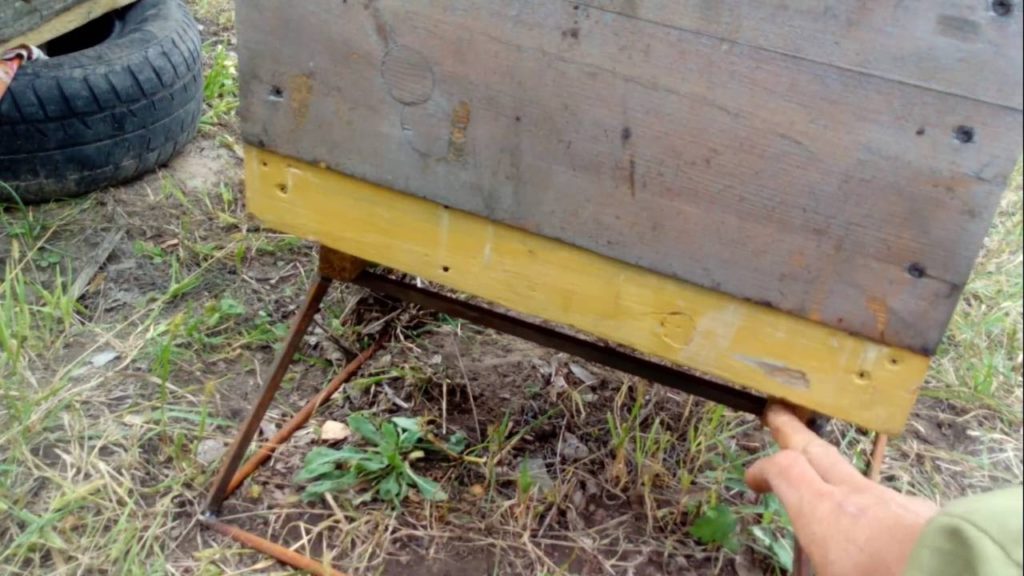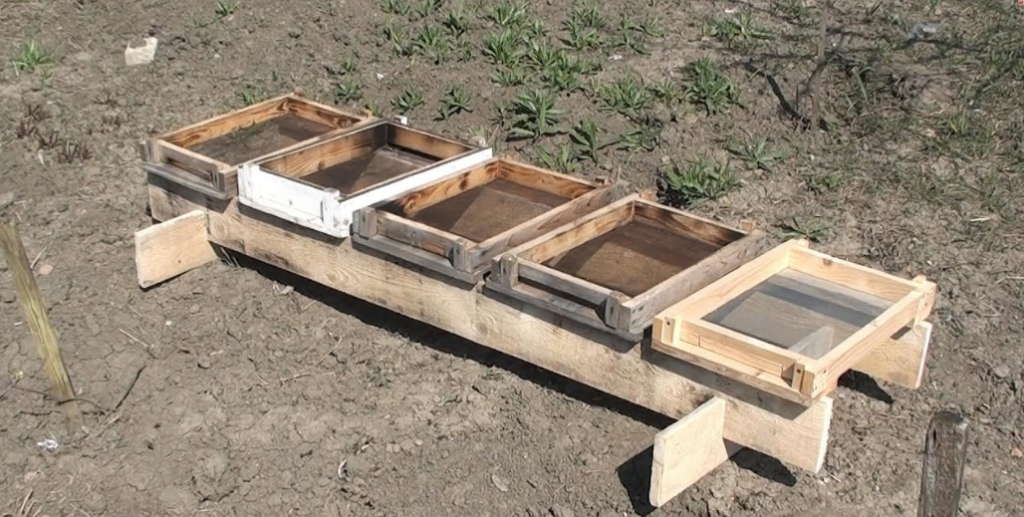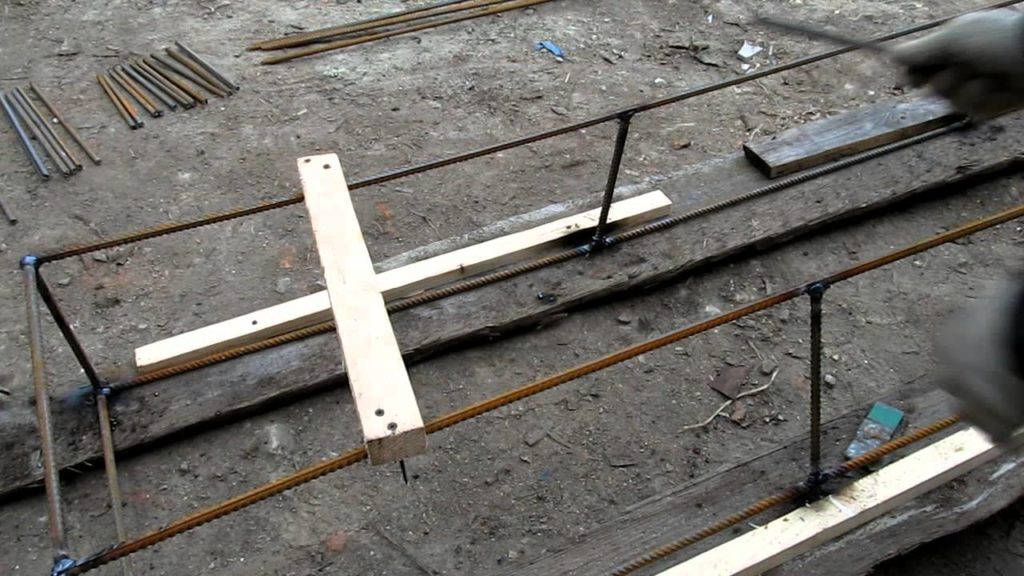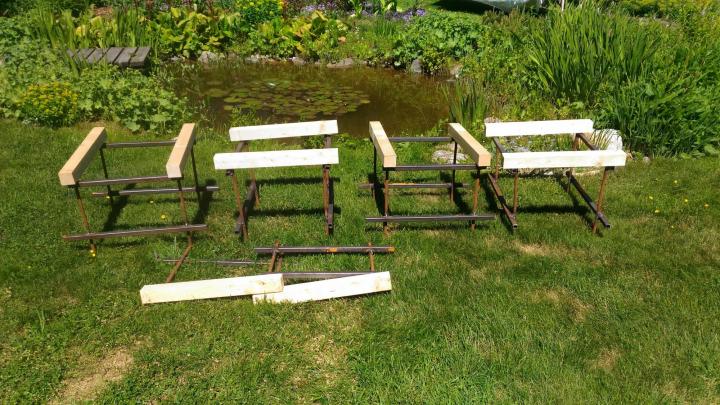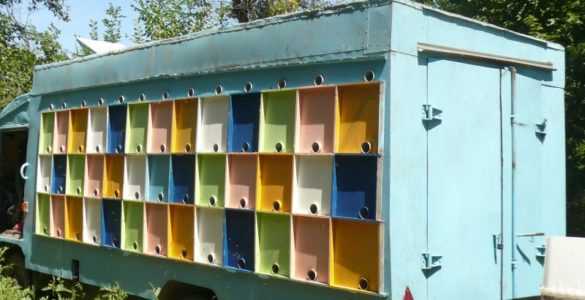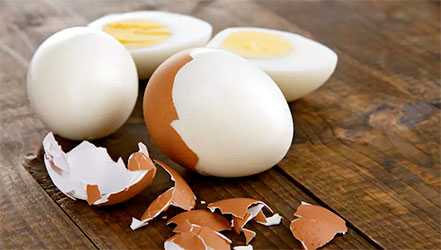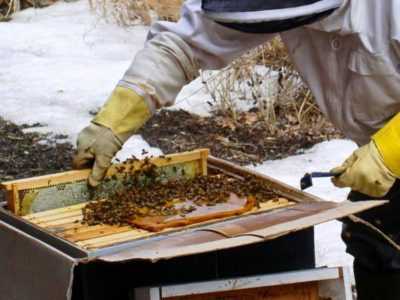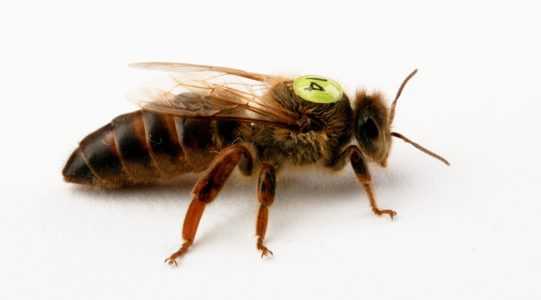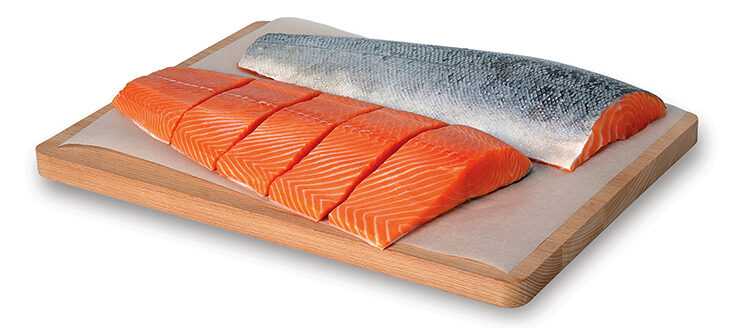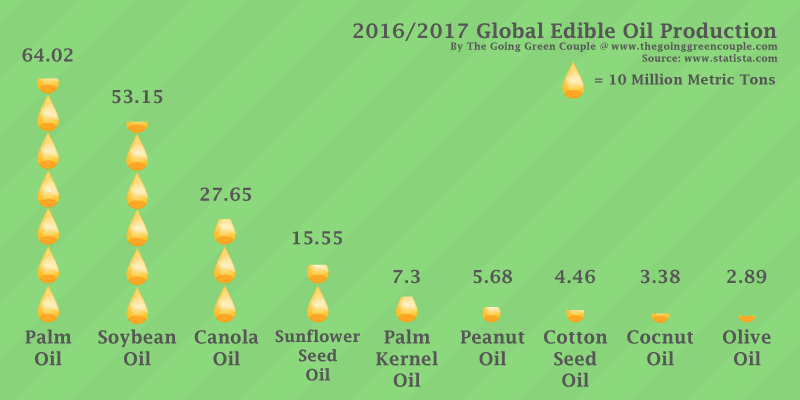Structures that contain domestic bees are installed at a short distance from the ground. For this, high supports are used that can support the weight of the structure. Beekeepers usually make do-it-yourself hive coasters from a variety of materials. For a mobile apiary, you will need lightweight folding supports.
What are the stands for
Bees are accustomed to and conveniently placing a house on a hill; they prefer not to use objects in the lowlands as their dwelling. In addition, lifting the structure above the ground solves several more problems:
- Protection of the bottom from dampness, leading to rotting, mold, cracks.
- A barrier for rodents and other pests.
- Improved ventilation of insect nests, protection from hypothermia.
It is easier for the beekeeper to work with the structure on supports – he does not have to bend too much.
Important:
If the soil surface in the apiary is uneven, a hive support can help correct this deficiency.
You should adjust the height (digging depth) with your own hands, creating a slight downward slope from the back to the front. Then it will be easier to clean the pallet of debris, wax particles, and moisture will not penetrate through the notch.
Advantages
The stand is considered one of the must-have hive blocks. Not all materials at hand are suitable for making it. A good support requires:
- strength, no deformation;
- suitable sizes so that the bottom does not fall through;
- resistance to moisture, low and high temperatures;
- withstanding the weight of the structure with honeycomb filled with honey, which can reach over 100 kg.
Beekeepers prefer to make products that have the listed advantages and the required dimensions with their own hands from different materials.
Small and lightweight frame supports are common. They take up little space and are easy to transport. In a stationary apiary, you can use elongated one-piece supports designed for several insect houses.
How to make
If you have the necessary tools, materials and a workplace, it is easy to make a stand for the hive with your own hands. Many beekeepers lift insect structures off the ground using wooden or metal supports of various sizes.
The individual parts must be carefully connected together. The bottom of the finished support is dug into the ground for the stability of the structure.
Wooden coasters
The product from the boards is cheap, it is easy to assemble it with your own hands. However, without impregnation that protects against moisture, it will not last long (1-2 years).
Rectangular hive stands usually consist of 4 square legs connected by slats.
Important:
In the lower part, the stakes are slightly sharpened, treated with a moisture-proof compound. You can equip them with metal tips.
The sawn parts are fastened with a hammer (screwdriver) and nails (self-tapping screws). You need to nail 2 legs to the ends of the longest planks, and then connect them with the sidewalls. The stakes should be parallel to each other, without displacement, and their tops should protrude above the edges of the rails.
Metal stands
Products are more expensive, heavy, but durable and strong. The long structure (platform) can withstand up to 3-4 bee hives with honey.
Stands can be made with your own hands from metal rods, corners, pipes, welded together or connected with bolts and nuts. In the second option, you first have to drill holes of the required dimensions for the fasteners.
Important:
If the selected material will rust from moisture, the finished item should be painted before use.
Metal supports are foldable for easy transportation. And truncated pyramids are easy to store by nesting one into the other.
Types and their sizes
The length and width of the support depends on the number and dimensions of the hives that are planned to be placed on it. The optimal height is 40 cm, it is allowed to increase or decrease it by 10 cm. If you need to raise the bee houses even more, you should take care of additional protection from the wind.
Important:
The most common forms of hand-made coasters are square, rectangle, truncated pyramid.
It is recommended to lower the front edge by 1,5-2 cm by deepening into the soil in order to slightly tilt the structure towards the tap hole.
Stakes
In a simplified version, 4 wooden legs of a square section with a side size of 5 x 5 cm are dug into the ground. Free-standing stakes are suitable in areas with a solid layer of soil that is not washed out by water, does not sag.
To increase the strength of the stand, its legs are connected using flat slats with a thickness of 2,5-3 cm. If the height of the slats is not more than 6 cm, you will need 2 pieces on each side. From above, the stakes should protrude 2-2,5 cm. Usually such a stand, similar to a stool without a seat, is made to fit the size of standard hives (45 x 35 cm). You can use metal parts (pipes, corners).
Boxes
Supports in the form of a box without a bottom are assembled with their own hands from hewn slats 3 cm thick, with an interval of 4 cm.If their dimensions are designed to accommodate 2-3 hives in a row, longer boards are taken. To strengthen the walls of the stand, bars are nailed to them from the inside at some distance from each other.
The support-box is convenient in that it can be used to put dry grass, leaves, sawdust for warming the hive from autumn to spring. There are do-it-yourself supports made of metal or plastic. They can be used to move the hive during work, for example, when it is necessary to remove the filled frames from it to obtain honey and a lining.
Truncated pyramids
A frame with trapezoidal walls is usually made by hand from smooth metal rods with a diameter of at least 1 cm. The sides of the bottom of the house should be 3-4 cm longer than the upper rectangle of the pyramid. The stand expands from the bottom by about 10-15 cm.For a hive with dimensions of 45 x 35 cm, with a support height of 50 cm, the lengths of the sides of its upper part can be 42 x 32 cm, and the lower part – 52 x 47 cm.
A more stable structure is obtained by using metal corners. Their sides hold the hive well.
Other options
Some beekeepers use improvised means of the right size as a stand for insect houses, or make them with their own hands from building materials – bricks, concrete walls or cinder blocks 10-15 cm thick.
Possible hive stands:
- wooden crosspieces made of thick boards;
- car rims or tires filled with sand, gravel;
- pieces of logs.
Improvised means, as a rule, are less durable, have a short service life.
A hive stand is essential to ensure good living conditions for the bee swarm. It protects against pests, dampness and cold, and with the right choice of material and careful manufacture, gives the hive stability. A sturdy DIY support will last for several years.

